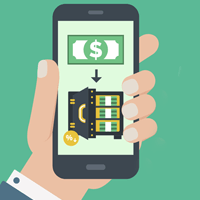5+ Mobile-Personalization Services to Know

Smartphones have become one of the most valuable tools for shoppers. These handheld devices can be used to not only find businesses on the go, but also to make purchases, research products and compare prices while in stores.
All of this means that retailers have no choice but to incorporate mobile into their business plan. This doesn't mean just having a mobile website, but also reaching consumers through apps, mobile advertising and even QR codes. In order for retailers to get the best return on investment (ROI) from their mobile initiatives, however, they must find a way to not only reach consumers on the small screen, but entice them to take action too. Perhaps the best way to do so is through personalization tactics.
1. SMS Marketing
According to a recent study from Vibes, 89 percent of consumers would sign up for mobile SMS messages if they were personalized. The data further shows that consumers rank the most important aspects of personalization as using preferences like favorite shopping categories, brands and sizes (60 percent), timeliness (20 percent), location (13 percent) and simply using the consumer's name (8 percent). There are a variety of SMS marketing providers available on the 'Net for retailers to choose from, including Vibes, which offers a mobile CRM for advanced segmentation and personalization. Other SMS service providers worth checking out include Trumpia, SendHub and Tatango.
2. Mobile Apps
Retailers can integrate location-based solutions into their mobile apps in order to reach consumers when they are nearby a brick-and-mortar location. For example, solutions like Digby's Localpoint enable retailers to send messages, like a 15 percent off coupon, to consumers when they are nearby the retailer's brick-and-mortar store. In addition, Localpoint enables retailers to engage with consumers as they enter a physical store, essentially becoming a shopping companion. The platform also offers analytics for in-store consumer behavior, which can be leveraged to improve marketing initiatives.
3. Mobile Advertising
There are many ways to reach your customers in a personalized way through mobile advertising. One way is with Enhanced Campaigns in Google AdWords. These campaigns enable retailers to publish ads that show up only to nearby consumers who are searching on their smartphones during store hours, increasing the chances that the consumer will stop by the brick-and-mortar store. In addition, advertisers can leverage ad platforms like Millennial Media to target consumers based on a variety of factors in addition to location, such as behavior data and demographics.
4. QR Codes
QR codes aren't the hot topic they once were, however, they can still be valuable when used correctly. For example, merchants can leverage QR codes on their packaging (even shipping boxes!) to provide consumers with bounce back coupons. In addition, QR codes can be leveraged inside a brick-and-mortar store to teach consumers more about products by directing them to demonstration videos or product reviews. There are a variety of QR code platforms available, including QR Solutions and Trakqr, the latter of which includes analytics to track campaigns.
5. Email
Chances are you probably already have a personalized email campaign put in place, and if you don't, you should. That said, it is vital, especially during the holidays, that your emails are optimized for mobile. This is because 41 percent of emails are opened on a mobile device according to a recent GetResponse study. Moreover, 42 percent of subscribers will delete emails that don't display correctly on mobile devices. This means that your campaign and its personalization efforts are going to waste if it is not readable on the small screen. Luckily, solutions like GetResponse's responsive email templates can help merchants deliver emails that aren't only personalized, but optimized too.

Subscribe to Our Newsletter!
Latest in Mobile Marketing










